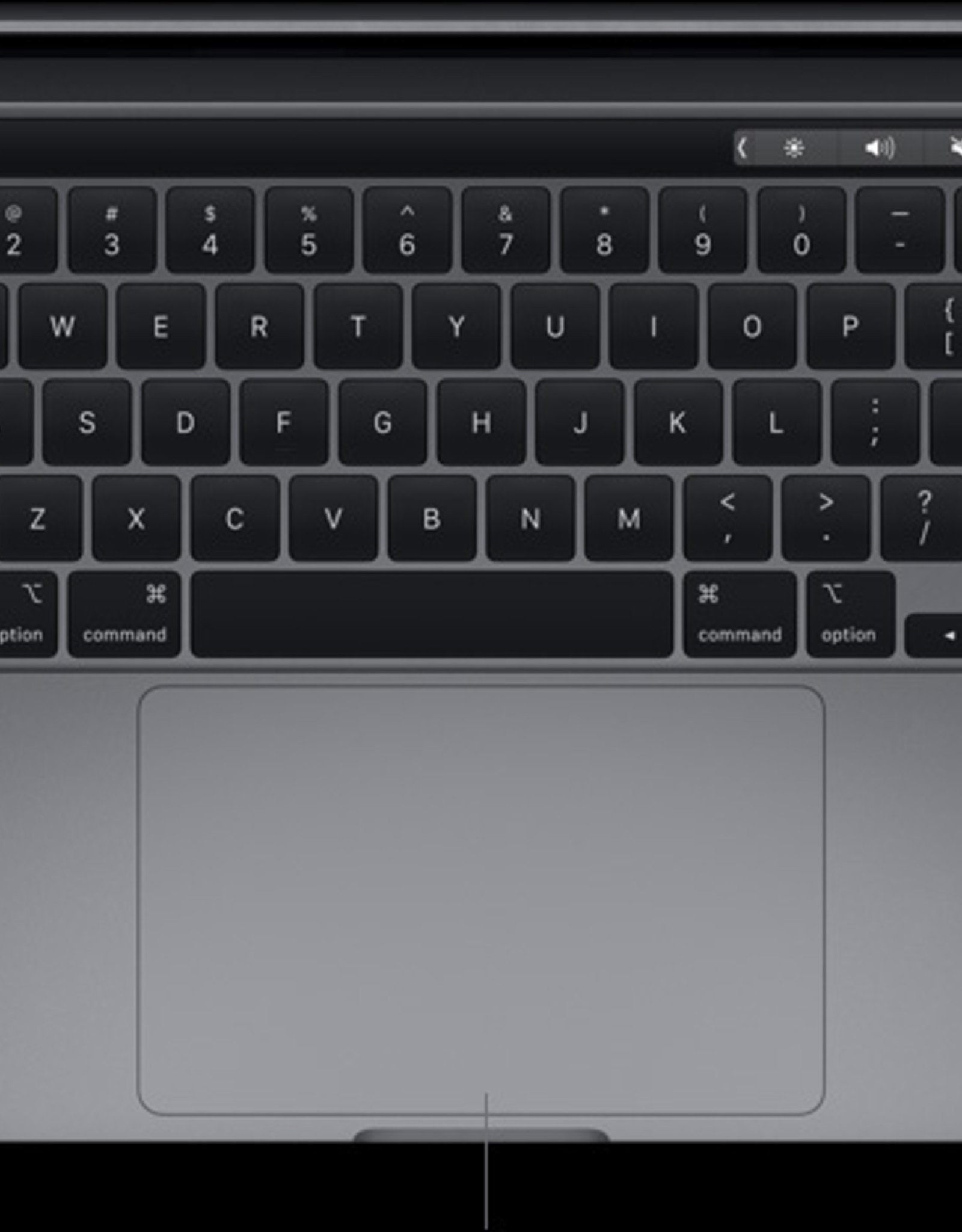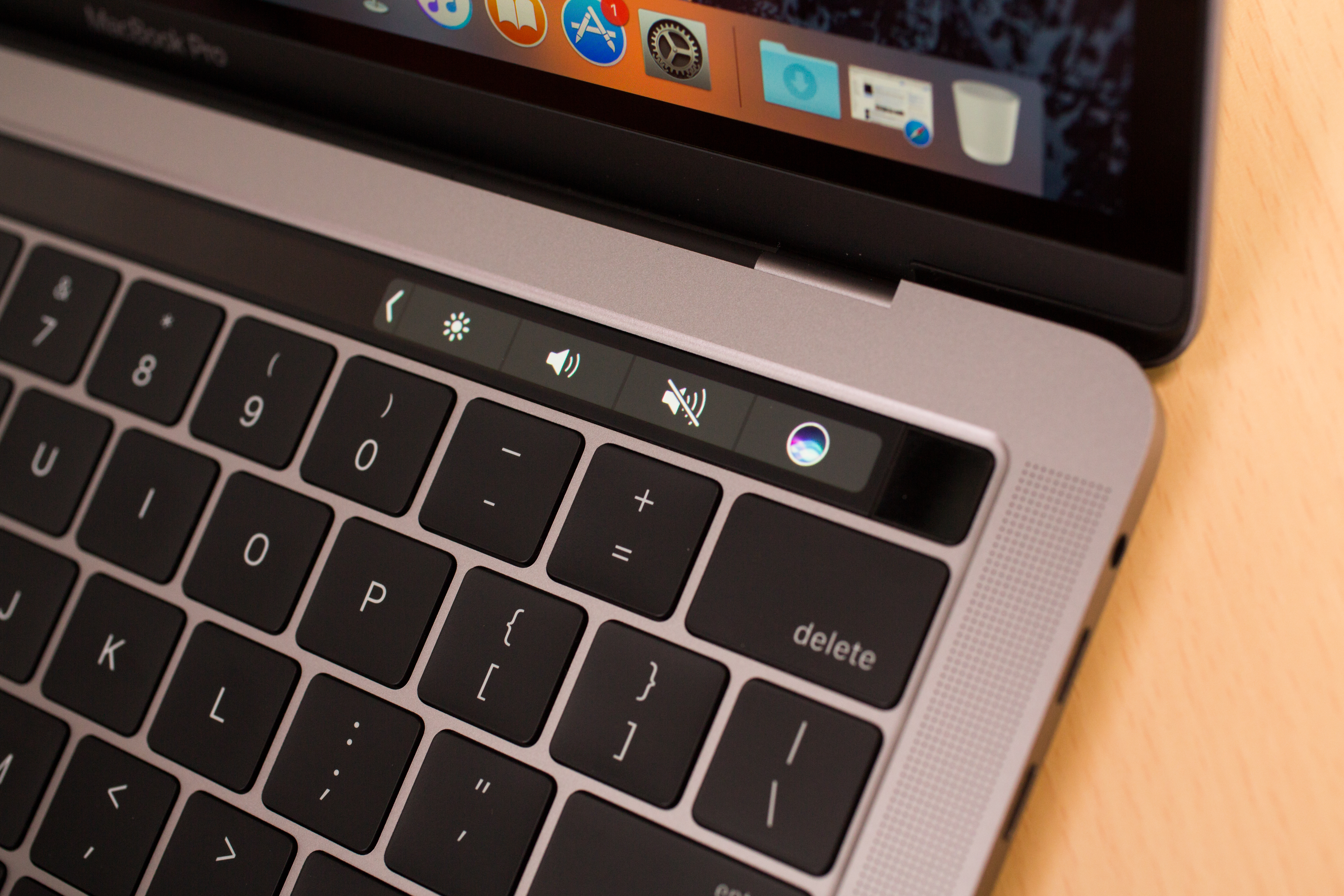
- #Apple mac pro touch bar how to#
- #Apple mac pro touch bar full#
- #Apple mac pro touch bar software#
- #Apple mac pro touch bar windows#
These examples are predicated on you using, and being generally familiar with, the Apple-made apps that currently have Touch Bar support. The biggest confusion I ran into was when I had to awkwardly switch back to the touchpad to mouse up to the top of the Photos app and hit the Revert to Original button in order to undo all my changes.

You can also run through all the built-in photo filters with a finger-tap, or adjust brightness and color, again by running your finger across a very analog-feeling control bar. There's a control wheel for rotating a photo as you crop it, and it's an example of exactly the kind of analog-style control the Touch Bar excels at. Unlike an iPhone and iPad, Macs support multiple user profiles, so each person using the machine can set up fingerprint access to their profile. Setup is similar to an iPhone, with repeated fingertaps on the sensor recording fingerprint data. That uses Apple's custom T1 security chip, which is built into the system, and the fingerprint reader that sits on the far right side of the Touch Bar. The initial thing you'll want to do with the Touch Bar is set up Touch ID. For more efficient general computing, so far I find that Apple's Touch Bar is the more immediately useful of the two ideas.

For illustrators and animators, I can see the real appeal of the Surface Dial and its big, analog-feeling wheel. Like the Touch Bar, the Dial provides basic system functions, including volume controls, when not in a supported app.īoth are very early in their development, and both call out for wider app support (neither has a Photoshop-specific set of controls yet). Both the Bar and Dial offer easier access to specific menu items in select apps.
#Apple mac pro touch bar windows#
That physical control knob works on many Windows PCs, but is specifically designed with the Surface Studio desktop in mind, and it covers a lot of the same ground as the Touch Bar. One interesting comparison to make is to Microsoft's new Surface Dial. If you prefer Spotify to iTunes, or Chrome to Safari, there's not much the Touch Bar can do for you from within those apps, besides the basic system functions previously mapped to the Function key row, such a volume controls. I found the Touch Bar added something useful to each of these, but that's predicated on actually using those apps. But until those companies and others deliver, it's all about Apple's in-house apps, including Mail, Messages, iTunes and Safari. Microsoft has also pledged to add Touch Bar support for Office.
#Apple mac pro touch bar software#
All these years later, and through countless versions of Photoshop, and I can still sit down in front of the latest iteration of the software and have a basic idea of what I'm doing.) (As an example, I took a single-semester Photoshop tutorial course as a college undergrad way back in the 1990s. That's especially important because Adobe is a master of extreme usability and platform continuity.

It'll be very interesting to see what they do, and if long-time Photoshop users take to it. A key partner for Touch Bar support, Photoshop will add Touch Bar controls later this year.
#Apple mac pro touch bar how to#
Windows PC makers have struggled for years with how to properly present proprietary software interfaces, asking consumers to learn and relearn new behaviors for apps they may already be familiar with, or for programs and features that may disappear or change radically in the next version.Īdobe is one company you really want to watch in this space. That's easy enough to translate when only Apple-created programs are supported, but we'll have to wait and see how other software makers handle the Touch Bar.

#Apple mac pro touch bar full#
You can still access volume and brightness controls, but to get the full default list of commands back, you'll have to tap on a small arrow to expand it (which also hides the contextual commands for the app you're currently using).Įach Touch Bar series of commands has its own visual and organizational language. But when using select apps (for now mostly Apple-created apps such as Safari, but more third-party support is on the way), new contextual commands appear on the Touch Bar, and the system tools roll up into a condensed version on the right side of the strip. On the far right end of the Touch Bar is a fingerprint reader, similar to the one found on the iPhone, which enables Touch ID and Apple Pay for secure system log-ins and online payments.īy default, the Touch Bar displays system tools, including screen brightness and volume control. The Touch Bar is a long, skinny OLED touchscreen that sits above the keyboard, replacing the traditional F1-F12 keys, as well as the escape key and power button. I've lived with the 13-inch MacBook Pro with Touch Bar for almost two weeks. The new MacBook Pro (on the left) is thinner than the previous design.


 0 kommentar(er)
0 kommentar(er)
